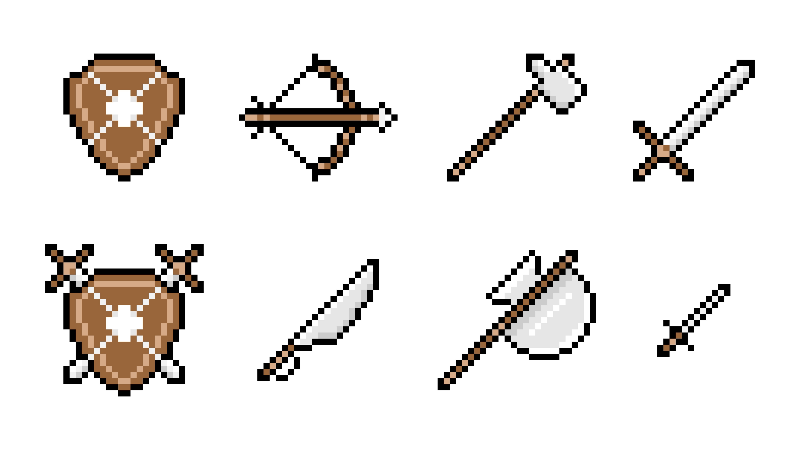PoE Cast When Damage Taken: Let Enemy Attacks Work for You
By Sean O'Toole | January 17th, 2018 | Categories: Path of Exile
Table of Contents
Revolutionizing the RPG
Role Playing Games (“RPGs”) are one of the longest-running and most beloved of all video game genres. Tracing their lineage all the way back to the original, pre-video game era of tabletop RPGs like Dungeons and Dragons, these games have played a significant role in the lives of pretty much every gamer. Whether you spent time backstabbing as a rogue in World of Warcraft, roaming the wasteland as a wanderer in Fallout, or grinding out levels in RuneScape, every gamer has their favorite RPG.
Now, this leads to an interesting point, though: every RPG is centered around the same core gameplay principles of killing monsters, gaining experience, leveling up, and getting better gear so you can move on to the next area and do it again. What allows each RPG to distinguish itself from the ones that came before it and makes it stick in the hearts and minds of the gamers who play it? In my experience, one of the things that make different RPGs so enduring and endearing is the way that they manage to innovate on the underlying RPG archetype and create their own flavor.
Path of Exile (“PoE”) is known for accomplishing this through the use of its gem and socket system, which allows players to customize their play-style based on the types of gems they put in the sockets on their gear. This is a marked departure from the traditional approach in RPGs, by which players were forced to select a class at the very beginning of the game, or at least fairly early on, restricting their access to a particular list of skills and abilities. Most games do not allow you to change or alter your class throughout the course of the game and force you to acquire gear with attributes keyed specifically to your class.
PoE, on the other hand, gives you access to a wide array of abilities through gems that can be mixed and matched in the sockets on your gear, providing a unique and dynamic character build that you can alter whenever the need arises! Perhaps one of the neatest corollaries of the gem and socket system is the concept of PoE Cast When Damage Taken (“CwDT”). CwDT allows you to build a character that automatically fights back as you take damage, without requiring any additional action on your part!
CwDT: A Primer
CwDT is, at its core, a pretty simple concept. However, there is a great deal of debate and theory craft surrounding the “best” CwDT configurations in PoE. Let’s leave those high-level theories for another article, and focus on the basics for now. CwDT is a support gem. This means that you put the gem into an item, and then link another spell to it that triggers when a particular condition is satisfied. In the case of the CwDT support gem, the triggering condition is a certain threshold damage amount being sustained by the player character. For example, a level 1 CwDT will trigger when the player takes 528 damage, and spells linked to it will cast. You are allowed to link multiple spells to a single CwDT gem, causing them all to cast each time the damage threshold is met. However, keep in mind that support gems only affect spells – attack gems cannot be linked to CwDT.
Another caveat is that damage-over-time effects, whether applied by enemies or your own abilities, DO NOT add to your CwDT damage counter – you have to take direct damage to trigger CwDT. To summarize, then, you use CwDT by putting at least one of these support gems into one of your items, linking a spell to it, and taking direct damage from enemies until the minimum damage threshold is reached and your spell is cast! It’s a pretty simple way to add some extra punch to your rotation, but there is still another very important consideration: Cooldowns.
Managing Cooldowns and Timing
Every time you sustain the minimum required damage to trigger your CwDT and cast your linked spells, the spells enter a 250 ms cooldown during which your CwDT CANNOT trigger again, and during which your damage counter will not begin to build again. This serves the purpose of preventing basically constant CwDT procs from breaking the game. There are, however, some ways to at least partially work around this.
One strategy is to equip multiple CwDT gems in your items. While copies of the same gem will share cooldowns, CwDT gems of different levels can mitigate cooldown issues due to the disparity of damage required to trigger them. Thus, by mixing gems of different levels and arranging them in the correct trigger order, you can go a long way toward never having all of your CwDT-linked spells on cooldown at once!
Building Your CwDT Character
Now that we’ve discussed the basic mechanics of what CwDT is and how it works, let’s begin to delve into some of the finer points of how to use it. If you are going to be attempting to make use of CwDT gems of different levels in order to avoid cooldowns, you need to be aware of the fact that you can’t link spells with a higher character level requirement than your CwDT gem. Additionally, if you’re going to be using some lower-level CwDT gems, be aware that spell damage effectiveness is reduced at lower levels – with a spell linked to a level one CwDT doing 70% less damage than if it were cast normally.
Although starting to balance out all these considerations is a bit complex for the purposes of this article, Player Logikkus threw together this extremely helpful chart full of information about CwDT damage thresholds, level requirements with other various spells, damage modifiers, and more! I recommend taking a look at it as you’re getting started with this build to help you get a handle on the numbers behind everything. One of the key things to think about early on, though, is that some of the best spells to use with CwDT are those that can still be effective at lower skill levels (so more defensive effects instead of actual damage dealing) so that you can keep lower-leveled CwDT gems with lower damage triggers.
Trigger Orders
One of the final basic pieces to consider in making a CwDT character build is the importance of trigger order. As mentioned above, trigger order is important if you utilize CwDT gems of different levels and damage thresholds in an attempt to mitigate cooldown overlaps. Assuming that you have some type of trigger gem in each piece of gear, the order will be:
- Main Hand
- Amulet
- Helm
- Off Hand
- Chest
- Gloves
- Boots
Keep this in mind as you place your support gems, and remember that the linked sockets within your items also follow a set order of:
1 > 2
v
4 < 3 v 5 > 6
Conclusion
These tips should give you a baseline to begin wrapping your head around using CwDT in your own character build. Just to break it down one last time: try to use lower-leveled CwDT gems of different levels, and link spells to them that have effects other than simple damage output; pay attention to your trigger order and tweak things to try and avoid cooldown overlap. There is a whole lot more to it than that, but that’s for another article and another day. Thanks for reading!














